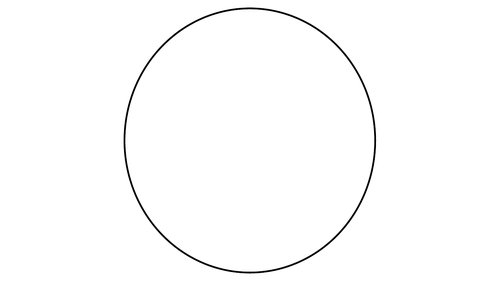


My class were really struggling to tell the time, so I made this powerpoint presentation which ‘builds a clock’ from scratch. It starts off as just a blank circle, which is then divided into half (referencing past fractions of shapes work). We talked about when the minute hand is half way around, we know it is half past, or 30 minutes past (half of 60 minutes - building on prior learning of 60 minutes in an hour).
The clock is then divided into quarters - so we know when it is quarter past and quarter to.
After this the lines disappear and the inside numbers appear on the clock, one at a time. We talked about how these are the hours - not the minutes. This is how we know which hour of the day it is, whether it is 8 o’clock, 5 o’clock etc.
Then, the ‘minutes’ appear around the outside of the clock. To support their understanding of minutes, I used only the minute hand at first, and we learnt how many minutes past each point on the clock is. I continued this all the way around the clock, rather than confusing them with ‘past’ and ‘to’. For example, we practised saying “40 minutes past” and “55 minutes past”.
After this, the children built their own clock from scratch. They had an outline of a clock with coloured dots for each minute. I colour coded the dots for each hour. When they had stuck the hours on, they placed the ‘minutes past’ labels around the outside. After this, they worked in pairs to move their minute hand around the clock to find the ‘minutes past’ that I called out. For example, if I called out “10 minutes past”, they moved their minute hand to the correct place on their clock. We stuck the minute hand on using split pins so they swivel easily. Please see attached photo for an example of the clock - this is an idea I saw on pinterest, so it is not my own but I found it extremely useful.
This really helped children to understand the role of the minute hand on a clock. Our next step is to add an hour hand onto the clock and begin to find “40 minutes past 5”.
The day before the clock building lesson, we spent our Maths lesson practising counting in 5s and talking about how many seconds in 1 minute, how many minutes in 1 hour etc. We did the traditional “How many jumps can you do in 1 second? How many jumps can you do in 1 minute? How many do you think you could do in one hour?” etc.
I hope that you find this as useful as I did. Please feel free to ask any questions, and I’d really appreciate a review if you download.
Something went wrong, please try again later.
This resource hasn't been reviewed yet
To ensure quality for our reviews, only customers who have downloaded this resource can review it
Report this resourceto let us know if it violates our terms and conditions.
Our customer service team will review your report and will be in touch.